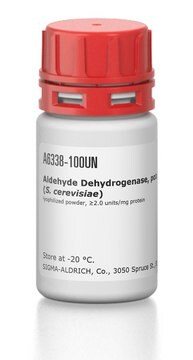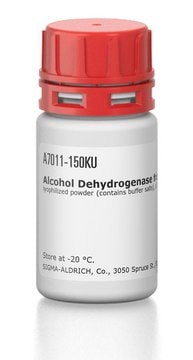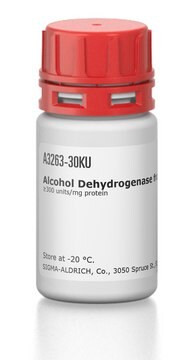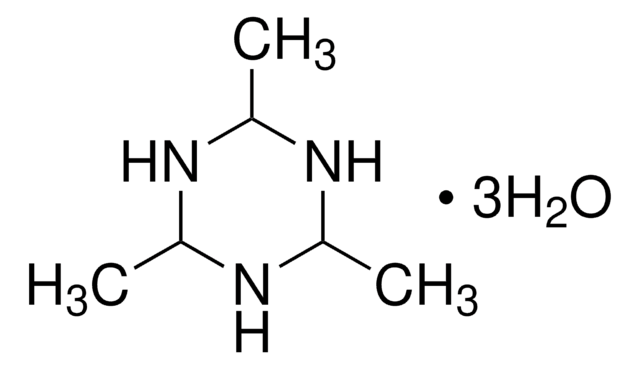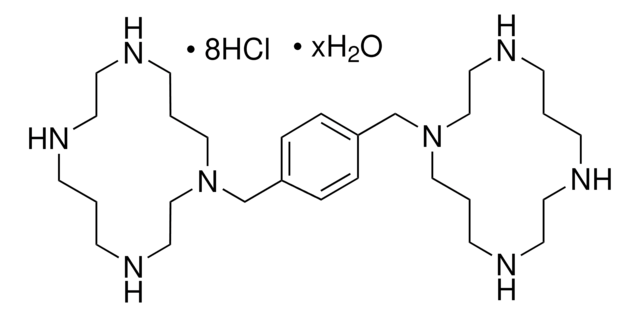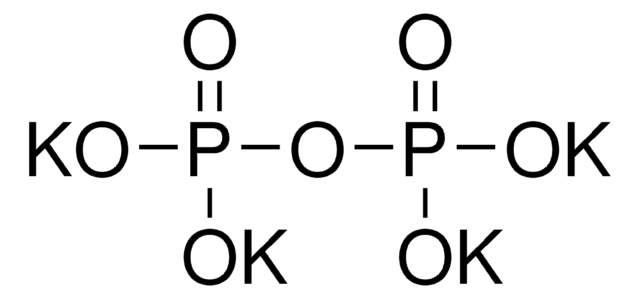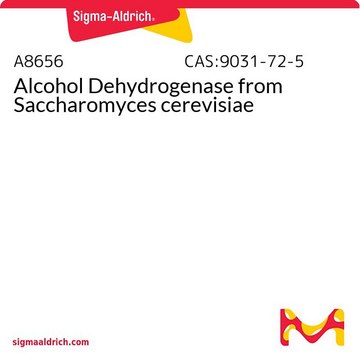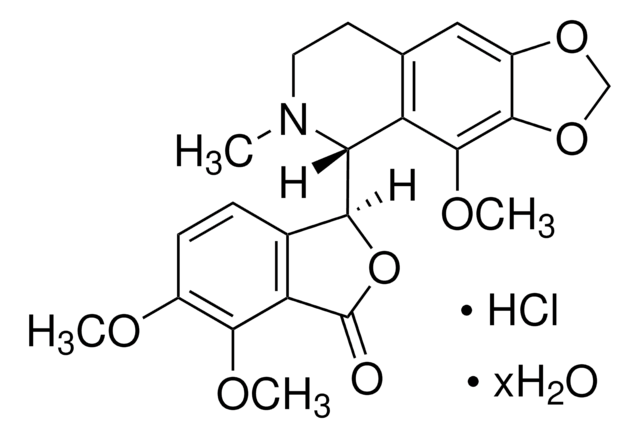A9770
Aldehyde Dehydrogenase, potassium-activated from yeast
lyophilized powder, ≥10 units/mg protein
Synonym(s):
ALDH, CoA-independent aldehyde dehydrogenase, m-methylbenzaldehyde dehydrogenase, Aldehyde:NAD[P]+ oxidoreductase
Sign Into View Organizational & Contract Pricing
All Photos(2)
About This Item
Recommended Products
biological source
yeast
form
lyophilized powder
specific activity
≥10 units/mg protein
storage condition
(Tightly closed. Dry)
color
white
UniProt accession no.
foreign activity
NADH oxidase ≤0.01%
NADPH oxidase ≤0.01%
alcohol dehydrogenase ≤0.01%
lactic dehydrogenase ≤0.01%
storage temp.
2-8°C
General description
Aldehyde dehydrogenase, from yeast, is used to catalyze the oxidation of a wide range of substrates, such as acetaldehyde, formaldehyde, propionaldehyde, n-butylaldehyde, isobutylaldehyde, n-valeraldehyde, caproaldehyde, benzaldehyde, glycoaldehyde, D-glyceraldehyde, malonic semialdehyde, and succinic aldehyde. Aldehyde dehydrogenase, from yeast has been used to study the production of ethanol and isobutanol. Aldehyde dehydrogenase, from Sigma, has been used along with alcohol dehydrogenase to measure ethanol production during the characterization of glycolytic metabolism and ion transport in Candida albicans.
The family of aldehyde dehydrogenase (ALDH) contains 19 genes in humans. It is localized in the nucleus, cytosol, mitochondria and endoplasmic reticulum of the cell.
Research area: Cell Signaling
Research area: Cell Signaling
Application
Aldehyde Dehydrogenase, potassium-activated from yeast has been used:
- for enzyme immobilization and to oxidize formaldehyde to formate
- to study the functional relation between hydrazone
- to measure ethanol production.
Biochem/physiol Actions
Aldehyde dehydrogenase (ALDH) modulates the non-P450 aldehyde reduction enzyme system. It protects the cell from the effects of toxic aldehydes. Mutations in this gene leads to Sjogren‐Larsson syndrome, Larsson syndrome, type II hyperprolinemia and cancer. ALDH-2 lowers cardiac ischemia, which arises due to myocardial infarction or post cardiac surgery.Aldehyde Dehydrogenase (ALDH) participates in the functioning of regulatory T cells that are a part of the immune system. It is also involved in cellular detoxification, the amino acid metabolism and protects cells against ultraviolet (UV) rays-induced damage. ALDH plays a role in retinoic acid biosynthesis and signaling.
Aldehyde dehydrogenase is a tetramer and has several different isoforms. Aldehyde dehydrogenase is inhibited by propylurea, crotonaldehyde, n-propyl isocyanate, cyclohexyl isocyanate, 1-n-propyl-1-[(4-chlorophenyl)sulphonyl]-3-n-propylurea, and 1-methyl-1-[(4-chlorophenyl)sulphonyl]-3-n-propylurea. The enzyme tested in 0.01 M pyrophosphate buffer shows a sharp optimum around pH 9.3 with acetaldehyde as substrate.
Unit Definition
One unit will oxidize 1 micromole of acetaldehyde to acetic acid per minute pH 8.0 at 25 deg C.
Physical form
Contains potassium phosphate salts
antibody
Product No.
Description
Pricing
related product
Product No.
Description
Pricing
Storage Class Code
11 - Combustible Solids
WGK
WGK 3
Flash Point(F)
Not applicable
Flash Point(C)
Not applicable
Personal Protective Equipment
dust mask type N95 (US), Eyeshields, Gloves
Choose from one of the most recent versions:
Already Own This Product?
Find documentation for the products that you have recently purchased in the Document Library.
Customers Also Viewed
Novel dehydrogenase catalyzes oxidative hydrolysis of carbon-nitrogen double bonds for hydrazone degradation
Itoh H, et al.
The Journal of biological chemistry, 283(9), 5790-5800 (2008)
Paper based biofuel cells: Incorporating enzymatic cascades for ethanol and methanol oxidation
Lau C, et al.
International Journal of Hydrogen Energy, 40(42), 14661-14666 (2015)
Balamurugan Jagadeesan et al.
Microbiology (Reading, England), 156(Pt 9), 2782-2795 (2010-05-29)
Listeria adhesion protein (LAP), an alcohol acetaldehyde dehydrogenase (lmo1634), interacts with host-cell receptor Hsp60 to promote bacterial adhesion during the intestinal phase of Listeria monocytogenes infection. The LAP homologue is present in pathogens (L. monocytogenes, L. ivanovii) and non-pathogens (L.
M Brendel et al.
Genetics and molecular research : GMR, 9(1), 48-57 (2010-01-19)
Blocking aldehyde dehydrogenase with the drug disulfiram leads to an accumulation of intracellular acetaldehyde, which negatively affects the viability of the yeast Saccharomyces cerevisiae. Mutants of the yeast gene PSO2, which encodes a protein specific for repair of DNA interstrand
Xabier Marichalar-Mendia et al.
Oral oncology, 46(1), 9-13 (2009-11-10)
Oral cancer is the sixth most common cancer worldwide and a major health problem in some parts of the world. Epidemiological studies have shown that habitual alcohol consumption could be a risk factor in oral carcinogenesis, although the true involvement
Our team of scientists has experience in all areas of research including Life Science, Material Science, Chemical Synthesis, Chromatography, Analytical and many others.
Contact Technical Service
